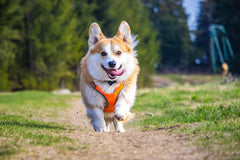
Signs Your Pet Has Anxiety and How to Help Calm Them
Pet anxiety is a real and common issue for many pet parents in India. As with people, our furry friends can become stressed and scared, resulting in anxious, nervous behaviour. For pets, loud fireworks during Diwali, staying alone at home, travelling by car or a break from routine can cause anxiety. It’s crucial to recognise the signs early on and administer pet anxiety relief to keep your dog or cat happy and calm. Here, we’ll discuss the symptoms of anxiety in your pet and what you can do to help them relax. Here, we’ll discuss easy at-home tricks and when to ask for help with solutions like dog anxiety medication or natural remedies. By understanding the triggers of anxiety in dogs and cats and learning how to intervene, you can ensure your cherished pet never feels scared or alone.
Common Signs of Anxiety in Pets
How Do You Know if Your Pet is Anxious or Stressed? In dogs and cats alike, anxiety describes a state of persistent fear that appears when triggers are absent. Watch for these frequent telltale signs of pet anxiety:
- Excessive Barking, Whining: An anxious dog may bark or howl more than usual. For instance, dogs with separation anxiety often begin barking once you leave the house. It’s their way of asking for assistance and is also a symptom of dogs being anxious. Cats don’t bark, but an agitated cat might meow nonstop or yowl if upset.
- Agitation and Pace: Is your pet pacing and can't lie down or sit still? An anxious pet may pace around the room, pant heavily or shake even when the temperature’s not elevated. This agitation is a sign of anxiety in pets. You may see your dog pacing in circles or your cat bolting from place to place, unable to settle down.
- Hiding or Bolting: Many pets become nervous and want to hide when they're around people. Your dog may even tuck his tail and burrow beneath the bed during a thunderstorm or when there are fireworks. Cats may cram themselves into a closet or a shadowy corner when they feel anxious. In the most severe situations, dogs may try to flee (scratch at doors, jump over the fence) to escape from whatever’s frightening them. If the dog or cat is always hiding or trying to get away, pet anxiety is probably the cause.
- Destructive Chewing or Scratching: Nervous pets will frequently destroy your home with their gnawing or scratching. An anxious dog may chew on furniture, tear pillows or scratch doors and windows. When stressed, cats might claw at curtains and pee outside the litter box. This behaviour is not performed maliciously – it’s a way to cope with anxieties. Understanding this as a symptom of pet anxiety can help you address the cause rather than only the damage.
- Appetite Changes: If your pet suddenly loses his appetite or experiences changes in diet habits, anxiety could be the culprit. An anxious dog may reject their favourite treats; a stressed-out cat may quit eating entirely. You may also notice digestive problems such as vomiting or diarrhoea that are brought on by anxiety. Is your pet eating healthy, but has a poor appetite? Stress may be the cause.
- Overlicking/Overgrooming: Loss of control from self-soothing by excessively licking or grooming one’s body. For instance, you wouldn’t believe how anxious a dog can be when he leaves his paws bloody from licking them so much. Anxious cats might also over-groom, resulting in bald spots in their fur. This licking or grooming is the pet’s coping mechanism when they are stressed.
- Aggression or Irritability: Fear can sometimes manifest as aggression. Even the most mild-mannered dog can growl, snap or bite when he’s anxious. For instance, a very nervous dog may growl if someone approaches him during a stressful time. Cats may hiss or swipe with their claws when anxious or cornered. If your sweet pet recently began acting aggressively, anxiety in dogs or cats can manifest in the form of acting out.
Remember: Every pet is unique. Some dogs have all of these signs, while others show only one or two, and some dogs may show subtle signals of anxiety. The key is to observe what’s out of the ordinary for your pet. Once you recognise several anxiety symptoms, that’s your cue to take steps to make your furry friend feel comfortable. Whether you’re out of the house or leaving the room, you can take steps to make him feel at ease.
Tips for Pet Anxiety Relief – How to Calm Your Pet

The first step is to identify pet anxiety. Now, let’s talk about how you can comfort a worried pet. The good news is that there are many effective pet anxiety relief methods you can test right at home. With a few alterations and the right products, you can reduce your pet’s anxiety and give them a much better quality of life. Here are some successful strategies to bring your pet peace and comfort:
Create a Safe Space
Create a safe, quiet space inside your home where your pet can retreat when feeling nervous. As one example, prepare a comfortable corner or crate with their favourite blanket and toys. This safe zone makes them feel secure. Gradually introduce your pet to the space, and during loud, anxiety-provoking events like thunderstorms or the festive firecrackers during Diwali, take your pet to this quiet area.
Cats and dogs tend to be soothed by a den of their own. Keep the lights low, and consider playing soft music to mask any frightening sounds. This is one of the easiest and most effective pet anxiety relief methods.
Stick to a Consistent Routine
Pets thrive on routine. Feedings, walks and playtime should occur at approximately the same times every day. Your pet is safer and has a better sense of control when he has a routine. Anxiety in pets is less likely to flare up in everyday situations.
Maybe your dog should go for a walk at 7 p.m. every day. If your dog has a consistent schedule, he will be less anxious while waiting for it. Abrupt schedule changes — missing a walk, pushing back mealtime — can make an already anxious pet even more nervous. Be consistent, and when possible, if you need to change things around (such as a new walking route or feeding time), ease into it so as not to shock your dog.
Regular Exercise and Play
A tired pet is a happy pet. Exercise is a natural stress buster and very effective for decreasing anxiety in dogs and (even in their feline counterparts)! Walk or run your dog every day, play fetch, or spend quality time together inside. Physical activity burns off excess energy and helps your dog relax. It’s hard for a dog to be anxious after playing ball for half an hour!
For cats, interactive play with a feather toy or laser pointer can do wonders. Exercise is not only an outlet for nervous energy, but it also triggers the release of endorphins – the body’s feel-good hormones which help to ward off stress. With regular play and exercise, you can naturally provide your pet with continuous pet anxiety relief.
Positive Training and Confidence-Building
Training doesn’t just teach tricks – it’s a fantastic way of building your pet’s confidence and trust in you. Train your pet in a quiet area, using a gentle approach and positive reward-based training. For instance, use treats and praise to teach some basic commands, such as sit, stay, or go to bed. Reinforce your dog or cat for behaving calmly.
An anxious dog can also be taught to pay attention to you and obey commands, which may prevent his mind from dwelling on what makes him anxious. It also makes you the calm leader your pet needs to feel comfortable, knowing you’re in control. Daily, short, fun trainings can help decrease anxiety in dogs by increasing their confidence.
Calming Techniques and Tools
There are other techniques you can employ to soothe a frightened pet. Many pet owners in India swear by Thundershirts or anxiety wraps for their dogs – these are snug vests applying gentle pressure, kind of like a swaddle for a baby, and help calm down anxious dogs. Natural calming aids are certainly something you can try, such as playing classical music around your house, using pet-safe lavender aromas around the home.
Keep calm; if your pet is feeling stressed out, don’t overreact. Instead, keep your cool and bond with a soothing, peaceful voice. Pet them slowly and softly. Here are seven ways that you can help your pet stay calm and safe during their treatment. Some dogs can even appreciate a light massage while stressed, which will relax tight muscles and leave the pets feeling less anxious.
Socialisation and Exposure
If your pet is only anxious in some situations — say, meeting new people or spotting other dogs — controlled exposure can also be beneficial. Slowly accustom your dog or cat to new positive experiences. So if your dog is nervous around strangers, for example, you can have a friend toss treats to him from down the block, until new people become synonymous with good things.
Gradually increase exposure: start with a brief trip to a crowded park, followed by a little drive around the block. Then, stand apart for a couple of minutes and gradually make it slightly longer. Good socialisation helps teach your pet that new things don’t have to be frightening. Leave it on for hours or even days at a time to reduce overall anxiety for your pets.
Be patient, and take the training at your dog’s pace – trying to get them into situations that make them uncomfortable too soon could have the opposite effect.
Consult Your Veterinarian
If your anxiety is severe or doesn’t improve regardless of your best efforts, don’t be afraid to ask your vet for guidance. A vet can assess whether something else is causing your dog anxiety and discuss other tactics or dog anxiety medication if needed.
Vets sometimes recommend anti-anxiety meds for dogs to decrease extreme stress. This might be a short-term prescription to get you through a stressful situation or a longer-term remedy for chronic anxiety. There are even anxiety tablets for dogs that can soothe your pet during long road trips or when you have to be away.
At all times, follow the hospital’s advice regarding these medications. Based on your dog’s size and the severity of their anxiety, your vet will pick the proper anti-anxiety medication with an appropriate dose. Medication's ability to provide rapid, if not always perfect, relief can be beneficial, but it is most effective in conjunction with the psychological training and the behavioural hacks outlined above. Again, keep in mind that anti-anxiety meds for dogs are not a “magic pill” to cure anxiety forever – it’s an aide to help calm your pet’s mind.
Try Natural Remedies for Pet Anxiety
Chances are, if you are a pet parent, you would jump at the opportunity to improve the health of your animals with safe, effective products, rather than poisoning them with harmful chemicals. Homoeopathic and organic treatments can offer a solution for pet anxiety with no side effects.
One of the popular choices is Dr. Goel’s Stressza drops – a homoeopathic anti-anxiety medicine for dogs and cats. Stressza is the all-natural way to calm and soothe your pet. It’s formulated as liquid drops (so you don’t have to shove pills or anxiety tablets for dogs, which some pets resist). You can either squirt the medicine directly into your pet’s mouth or mix it into a small amount of food. Pet parents say Stressza instantly soothes anxious behaviours like excessive barking, hiding and drooling. It’s an excellent addition to traditional dog anxiety medications, especially for mild to moderate anxiety or as a long-term treatment.
Another natural remedy to consider is Goel Vet Pharma’s “Me & My Vitality” granules, a product that elevates mood and decreases nervousness in pets. Combining this type of calming aid with a wellness supplement could target anxiety in dogs naturally – calming them down and helping them feel their best. Home remedies are harmless and can be administered daily, if required. They can be administered alone or in combination with veterinarian-prescribed anxiety tablets for dogs for additional support. Homoeopathic solutions allow you to soothe your pet without the concern of callous side effects, including drowsiness that potentially stronger medicines can bring.
Help Your Pet Live Anxiety-Free – Our Final Thoughts
Pet anxiety is no fun, but it is possible to calm your pet and make sure they feel safe. Begin by looking for the manifestations of anxiety we’ve talked about. If you notice your little buddy displaying these symptoms frequently, address the issue with the suggestions provided above.
Minor modifications, such as creating a safe space, sticking to routines, and giving plenty of exercise, can go a long way in alleviating your pet’s fears. Be gentle and loving – nothing beats reassurance from you to calm a pet’s nerves.
And for pets with more severe anxiety, don’t hesitate to consult with a professional. A combination of dog anxiety medication or natural remedies, along with behaviour training, may be a good solution.
Whether it’s vet-prescribed anti-anxiety medicine for dogs, or a more gentle homoeopathic drop like Stressza, there are remedies to suit every pet. What they’re trying to do is find what works for your dog or cat — to let canines and felines have happier, stress-free lives.
Order Today: Give Your Pet the Calm They Deserve.
You don’t need to accept the fact that your precious pet goes through their days ridden with anxiety. With a bit of help from the pet anxiety relief techniques mentioned above, your dog or cat will be feeling serene and joyful in no time.
If you’re looking for a safe and effective solution for severe anxiety, check out Dr. Goel’s Stressza. This natural pet anxiety relief has given thousands of pet owners all over India great results. Why wait?
Purchase Stressza from Goel Vet Pharma now and help your pet take the first step towards a stress-free life. And with your love, care and the best support, your pet will leave those fears well behind, stronger than ever!








